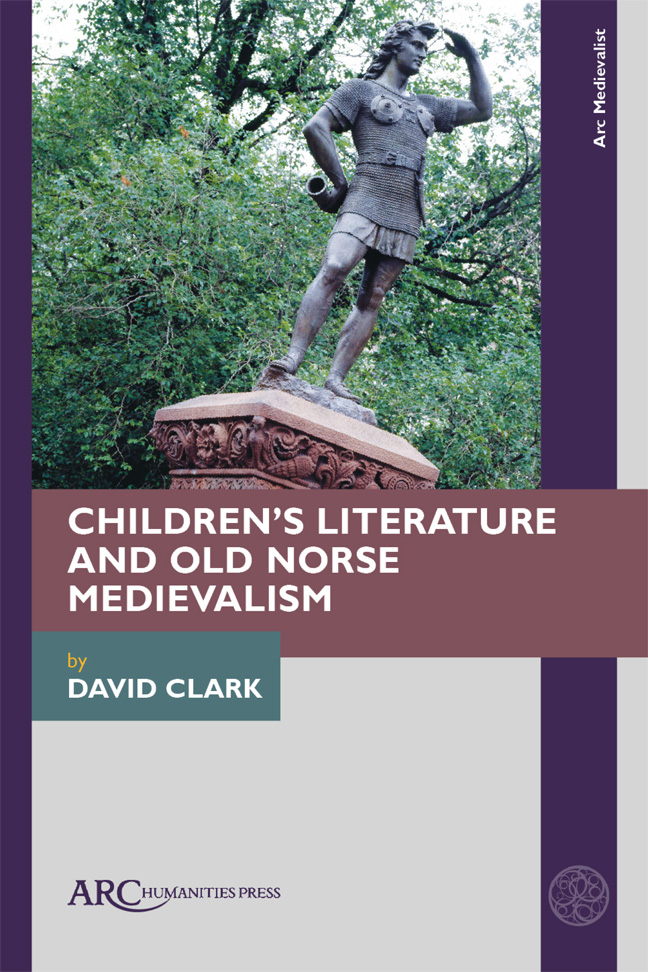Book contents
- Frontmatter
- Contents
- Acknowledgements
- Dedication
- Introduction: The End
- 1 Age-Related Categories
- 2 Generic Categories
- 3 Transformational Fantasy
- 4 Horned Helmets and Comic Anachronism
- 5 Viking Reputation
- 6 Runes and Magic
- 7 The Power of Story
- 8 Race and Ethnicity
- 9 Heroism
- 10 Viking Masculinity
- 11 Viking Femininity
- 12 Viking Sex and Gender
- 13 Bowdlerization
- 14 Sexuality
- 15 Ecological Threat
- 16 Norse Medievalism in Alan Early's Father of Lies Trilogy
- 17 Avoiding the End of Days: K. L. Armstrong and M. A. Marr's Blackwell Pages
- 18 Rick Riordan's Magnus Chase Series and Norse Medievalism
- Conclusion
- Select Bibliography of Frequently Cited Works
- Index
5 - Viking Reputation
Published online by Cambridge University Press: 17 February 2024
- Frontmatter
- Contents
- Acknowledgements
- Dedication
- Introduction: The End
- 1 Age-Related Categories
- 2 Generic Categories
- 3 Transformational Fantasy
- 4 Horned Helmets and Comic Anachronism
- 5 Viking Reputation
- 6 Runes and Magic
- 7 The Power of Story
- 8 Race and Ethnicity
- 9 Heroism
- 10 Viking Masculinity
- 11 Viking Femininity
- 12 Viking Sex and Gender
- 13 Bowdlerization
- 14 Sexuality
- 15 Ecological Threat
- 16 Norse Medievalism in Alan Early's Father of Lies Trilogy
- 17 Avoiding the End of Days: K. L. Armstrong and M. A. Marr's Blackwell Pages
- 18 Rick Riordan's Magnus Chase Series and Norse Medievalism
- Conclusion
- Select Bibliography of Frequently Cited Works
- Index
Summary
REPUTATION, PARTICULARLY POSTHUMOUS reputation, is a consistent theme throughout Norse literature and features in eddic and saga literature alike. In Havamal, Odin is adamant that although people and possessions die, “the glory of reputation never dies, / for the man who can get himself a good one,” and saga heroes often seem to feel forced into ill-advised or fatal actions so as not to tarnish their legacy. What Tolkien characterized as “Northern courage,” as we have seen, influenced Henry Treece's seminal Viking Saga trilogy and the theme of reputation regularly appears in association with the Vikings in contemporary medievalist children's literature. However, it is often simplified to associate it with more modern ideals of acting in a moral way, or inflected in terms of modern preoccupations with identity formation.
Rosalind Kerven's Troll's Treasure (2010), set in Viking Orkney, focuses on a young boy named Ragi who is stigmatized because he has webbed feet and thus is believed to be the bastard son of a “finman,” a figure from Orkney legend who can shape-shift to the form of a seal (23, 191). The novel features some broad saga motifs such as burial mounds associated with hidden treasure and supernatural occurrences (27, 156), and trial by ordeal, monetary compensation, and outlawry (62, 191).
Norse culture, however, is called upon to uphold modern moral values of fairness, honour, and forgiveness. One character refuses to help Grim trap other children, citing the gnomic principle that “It's always better to die with a good reputation, than to live and have people despise you” (3.117–18). Kerven here updates the emphasis in Havamal on the importance of fame to clarify that a good reputation should stem from morally sound actions. Similarly, Ragi is said to forgive and save from drowning the Jarl who has outlawed him out of “honour” (3.175), where a saga character would more likely redeem his honour by cutting the Jarl down where he stood. Ragi's noble deed facilitates a happy ending in which the Jarl pardons him and he is accepted by the community and given “a new name…Ragi Monster-Slayer” (3.183).
- Type
- Chapter
- Information
- Children's Literature and Old Norse Medievalism , pp. 53 - 56Publisher: Amsterdam University PressPrint publication year: 2023

